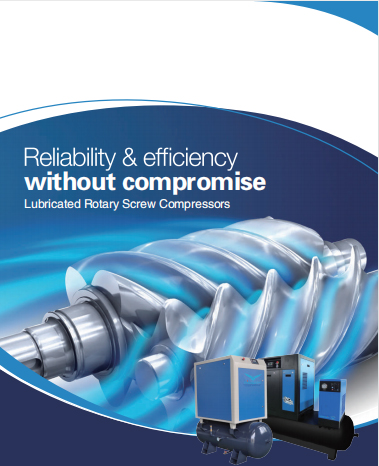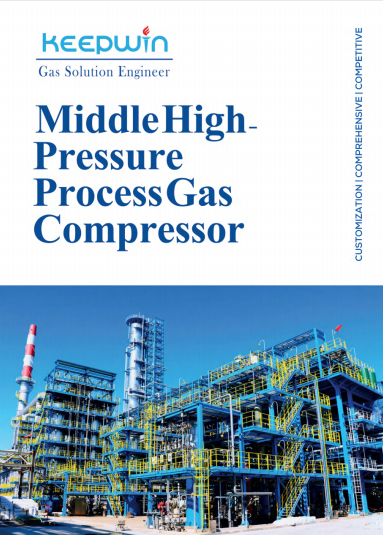Compressed‑air and process‑gas systems are specified worldwide in a dizzying variety of flow‑rate units—Nm³/h in Europe, SCFM in North America, L/min in laboratories, and “FAD” or “ACFM” in ISO test sheets. Understanding how these units relate (and when they do not mean the same thing) is critical for sizing compressors, comparing tenders, and ensuring a plant actually gets the flow it paid for. This article reviews the most common international units, shows you how to convert them, explains the ISO/ANSI reference conditions hiding behind each term, and then walks through a real calculation for KEEPWIN’s MZW‑22/10 mining piston compressor.
1 Why so many flow units?
Different regions adopted their own “standard” temperature and pressure decades ago, and industries layered on application‑specific terms:
| Abbrev. | Full name | Typical reference | Where you’ll see it |
|---|---|---|---|
| Nm³/h | Normal cubic metres per hour | 0 °C, 1.013 bar abs | EU process plants |
| Sm³/h | Standard m³/h (API) | 15 °C, 1.013 bar abs | Oil & gas specs |
| SCFM | Standard cubic feet per minute | 68 °F, 14.7 psia, 36 % RH | North‑American datasheets |
| CFM | Cubic feet per minute (unspecified) | User must define T & P | General trade literature |
| L/min | Litres per minute | Often ambient, lab use | R&D, small compressors |
| ACFM | Actual CFM at site | Site T & P | Vacuum/blower specs |
| FAD | Free‑air delivery | ISO 1217 Annex C | Compressor ratings |
“Standard” ≠ “Normal”
Because reference conditions differ, 1 Nm³/h ≠ 1 Sm³/h ≠ 1 SCFM. That is why reputable sites such as Airpack and IHI Dalgakiran publish dedicated converters rather than a single multiplier.
2 Quick‑reference conversion factors*
| From | To | Factor | Note |
|---|---|---|---|
| 1 Nm³/h → SCFM | × 0.588 | Air @ 0 °C, 1 bar abs | |
| 1 SCFM → Nm³/h | × 1.699 | 68 °F, 14.7 psia | |
| 1 CFM → L/min | × 28.32 | Ambient, definition needed Climet InstrumentsConvertUnits | |
| 1 L/min → CFM | × 0.0353 | — Calculator Academy |
*For other gases, or if humidity/pressure differ, use an online calculator such as EngineeringToolBox.
3 Worked example—KEEPWIN MZW‑22/10 piston compressor
Specification (mining package):
Inlet: 1 bar abs, 25 °C (surface)
Разрядка: 10 bar g
Rated flow: 22 Nm³/min (air)
3.1 Convert Nm³/min to SCFM
22 Nm³/min=22×60=1320 Nm³/h
1320 Nm³/h×0.588=776 SCFM
3.2 Convert to L/min (laboratory comparison)
22 Nm³/min×1000=22,000 L/min
3.3 Why this matters
A buyer in Canada reading “776 SCFM” on the KEEPWIN datasheet sees a familiar figure, while an EU engineer immediately notes “22 Nm³/min”; both numbers describe the same compressor, provided everyone respects the reference conditions.
4 Best practices when specifying compressor flow
State the unit и its reference (e.g., “700 SCFM @ 68 °F, 14.7 psia”).
Use ISO 1217 FAD when comparing vendor performance tests.
Account for site altitude and temperature; convert ACFM ↔ SCFM with gas laws.
Cross‑check with online tools from EngineeringToolBox, Airpack, or Dalgakiran.
Document humidity for hygroscopic or food‑grade applications (affects mass flow).
5 Take‑aways
Understanding global flow units avoids costly oversizing, under‑performance, and warranty disputes. KEEPWIN’s engineering team routinely converts between Nm³/h, SCFM, ACFM, and L/min to support customers from Santiago’s high altitudes to Dubai’s desert heat. Need help with a conversion or custom rating? Contact us at info@keep-win.com—our experts speak every language of flow.






